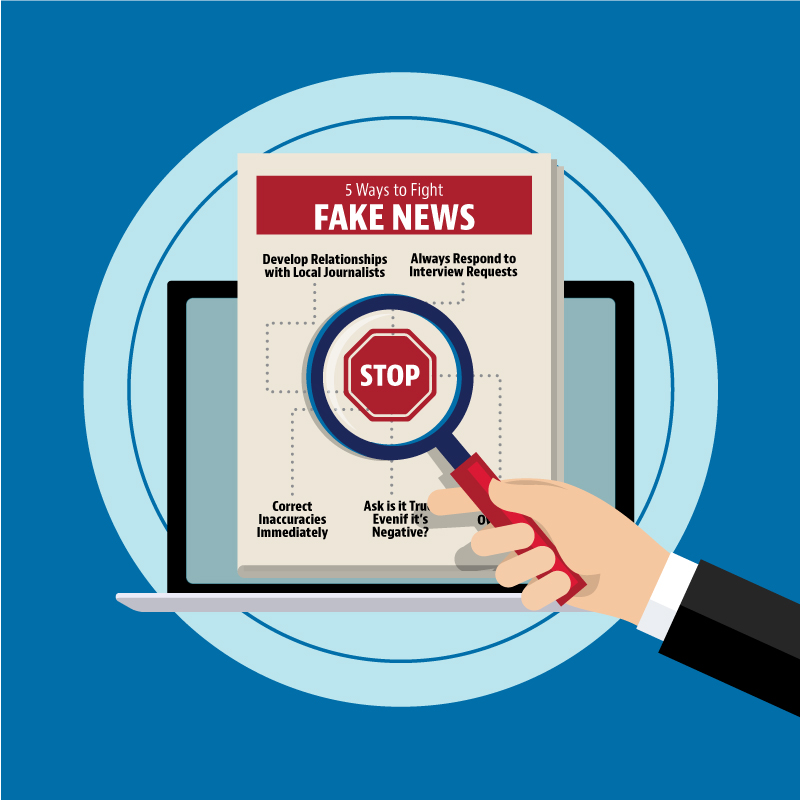The rise in popularity of the term “fake news” has caused an increasing amount of distrust for legitimate media outlets and journalists, as well as a healthy skepticism about articles found on social media. But what exactly IS fake news? Dictionary.com provides the following definitions:
- False news stories, often of a sensational nature, created to be widely shared or distributed for the purpose of generating revenue, or promoting or discrediting a public figure, political movement, company, etc.
- A parody that presents current events or other news topics for humorous effect in an obviously satirical imitation of journalism.
So, fake news can be articles that purposely mislead people or joke articles published by outlets such as The Onion. How can you be sure when a reporter calls you for an interview they’re not going to turn your real news into “fake news”? Here are five tips for protecting your reputation:
5 Tips to Fight Fake News
Develop relationships with local journalists.
When you develop relationships with the journalists who live and work in your community, you will have more opportunities to share positive news, as well as proactively respond to negative topics before articles are published. The journalists will come to you when they hear rumors around town. This allows you to provide clarification before inaccurate information spreads even further.
Always respond to interview requests.
Avoiding the media does not make negative news go away. In fact, it often makes your organization look like it has something to hide. Even if you cannot talk about a particular topic, it’s important to respond to a reporter. Even if it’s just to politely decline an interview. Check out my Nothing is a Spooky as Silence blog for ways to respond to a media request without talking about topics that do not belong in the public arena.
Correct inaccuracies immediately.
Like all of us, sometimes journalists make mistakes. If you spot something that is incorrect in an article about your organization, you are well within your rights to request a correction. I walk through the three steps of fixing erroneous reporting here: I’ve been misquoted! How can I fix it?
Ask is it true, even if it’s negative?
Unfortunately, it’s not realistic to assume that your organization will only have positive news to share. Sometimes utility rates need to increase to pay for the cost of providing services, maybe an accident occurs on the job site of a public infrastructure project, or city leadership finds itself embroiled in a scandal. Fake news is a phrase used incorrectly by many to discredit articles that ARE accurate because the content is not flattering to the article’s subject. Instead of claiming negative news reports are “fake news” focus on providing information that shows your organization is on top of the issue or problem and working to find a solution. Crises are a fact of life, but you can plan ahead for them to some degree. Check out recommendations from Andrea Boe, AE2S Communications Practice Leader, for how to Communicate Through a Crisis.
Be Your Own News Source!
The best way to fight fake news is to use your organization’s owned media. This includes your website, social media accounts, newsletters, and blogs. Think of these as your own news channels and you control all the content! You can also garner earned media by alerting journalists about your newsworthy updates with press releases or by hosting news conferences and other events.
FactCheck.org published a How to Spot Fake News article that I encourage you to check out. The more discerning we are when reading the news, whether in the traditional media or social media, the better off our entire society will be!
If you are looking for additional information about media relations best practices, feel free to contact me at Heather.Syverson@ae2s.com.

